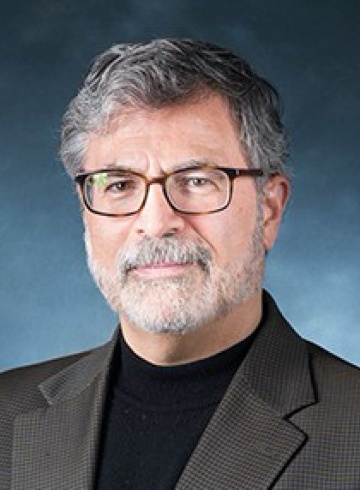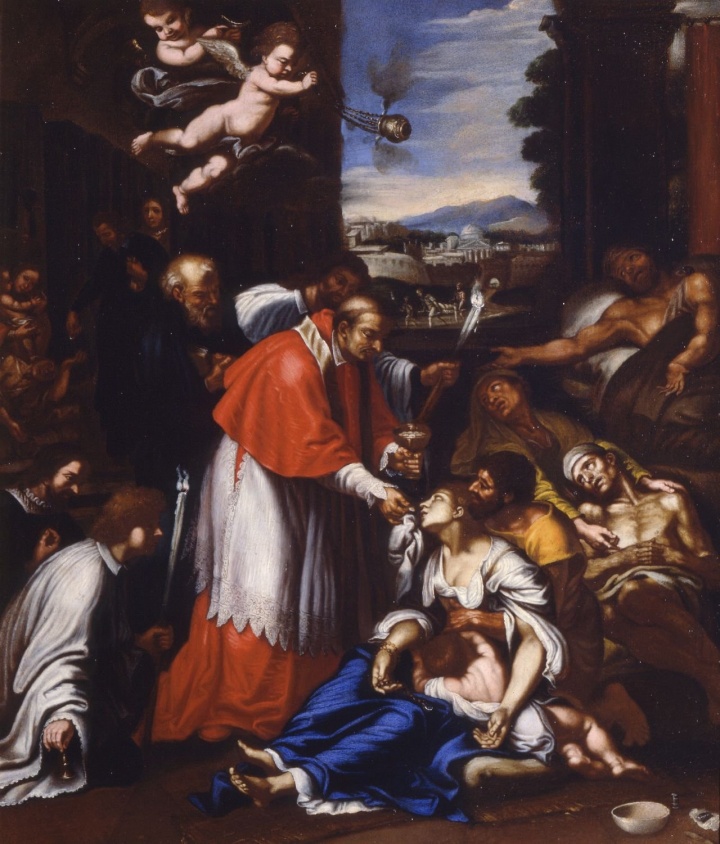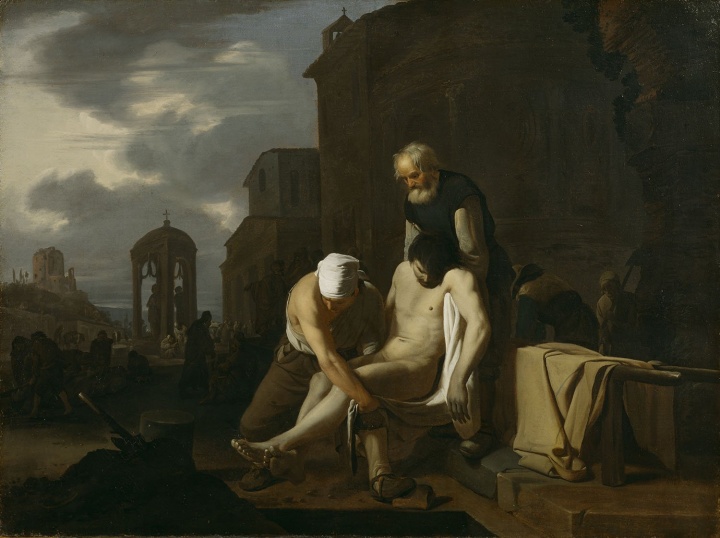Columbia College | Columbia University in the City of New York
Art in the Time of Pandemic

Saint Thecla Praying for the Plague-Stricken; Giovanni Battista Tiepolo, 1758–59
Columbia College Today: The two of you have been examining the ties between art and pandemic for a long time. How did you become interested in the subject of plague and its effects on society?

Thomas Worcester ’77
COURTESY REGIS COLLEGE

Franco Mormando ’77
COURTESY BOSTON COLLEGE
CCT: It’s been 15 years since the Hope and Healing exhibition. Do you think it has relevance for our current moment?

Saint Charles Borromeo among the Plague-Stricken of Milan; Pierre Mignard, 1646-50
Mormando: Shortly after the close of the exhibition I was invited to give a lecture for the Harvard course “Epidemic, Disease, and Society,” taught by a doctor affiliated with Harvard Medical School. He asked me to discuss the role of art in the time of social disaster. I’ve given this lecture 10 times by now and I’m now pretty sure of my answer: Art reflects reality. And in reflecting that reality it helps us to understand that reality and also helps us respond to that reality.
In times of crisis, people like to see their experience mirrored through another medium, especially art, which is visually striking, which moves to the heart. We also find comfort having our emotions validated — especially at a safe distance. Not contemplating our own disaster, but the disasters that have befallen our ancestors. So, art in times of social disaster and plague represents reality and helps people understand that reality, but above all, brings psychological relief and comfort. Because we all like to hear people say, “I know what you’re going through; I’ve been through the same thing.”
CCT: Thomas, what do you think? Why do people turn to art in times of trouble?
Worcester: We found [in planning our exhibition] that there were relatively few images of plague in the sense of people suffering or of dead bodies. There are a couple of exceptions, but the art tends to be more hopeful. The paintings might be urging people to imitate saints in charitable action with plague victims — a call to caring. We’re hearing a lot of praise now for healthcare workers and those who give up their lives to care for the sick, and there’s a lot of that in this art. Some people found the title of our exhibition, Hope and Healing, quite jarring at first, but in those works of art, that’s actually so. The hope for healing is depicted in the art.
Mormando: I see a lot posted on Facebook that is a 21st-century analogy to what Tom just described in the paintings of the Renaissance and Baroque. Through memes and videos and stories, people are giving hope and encouragement to each other to get through what we’re going through right now. Even though the context is very different and it’s not an explicitly religious one, it’s certainly the same human psychological experience.
We can relate to depictions of suffering, but also to images of hope. This old art still can speak to today.
CCT: If you were curating a show right now, are there any particular works that you think people should see that might speak to their experiences or that they might find inspiring or healing?

Burying the Dead; Michael Sweerts, 1650
Worcester: I would add that photography now plays an enormous role. We already have all kinds of images of those who care for, and those who are, victims of the virus. I think there will be an enormous number of images of this pandemic that will remain for generations to come as part of our cultural history. Early modern Italy was very visual, and now we’re bombarded with images. So, the power of images remains extraordinary. And I think it’s playing a major role in how people understand this pandemic.
CCT: On a more personal note, do either of you have a favorite work of art that you have been turning to for hope or inspiration now?
Worcester: As we speak, I have the catalog from our show sitting on my desk. I find the cover image, which I referred to earlier, especially engaging now: Saint Charles Borromeo among the Plague-Stricken of Milan. It’s by a French painter, Pierre Mignard, a work he did in Rome. It’s a very engaging painting of the sacrament of the Eucharist, bringing it to plague victims —who are being portrayed, probably quite realistically, as in pretty bad shape —reaching out to him. He’s bringing some kind of hope to them. Above them is incense; people thought the plague was easily transmitted through the air — actually the bubonic plague was not, but they didn’t know that; turns out it was transported by infected fleas. But they thought “bad air” was the main problem, so incense was thought of as a way of fighting it. So that’s all part of it, too: There are things we don’t understand [about COVID-19] and future generations might think, “Boy, were they naïve in 2020 and slow to understand.”

Allegory of Charity; Francesco de Mura, 1743–44
CCT: What advice would you give to alumni and students, who might be feeling a bit adrift in these times, on finding inspiration in art?
Mormando: Look to these beautiful images and take comfort in the fact that humanity has been through this numerous times, and has survived. We have survived through practical means — social quarantines, disinfecting — but also by reaching out to one another, with all due precaution, and helping each other. Human solidarity is what gets us through this. The drive within us to survive is great, and we shall do so again.
Worcester: The end of our show in 2005 coincided with Hurricane Katrina in New Orleans. Many people made an analogy that that horror was what the plague was like — something unexpected, and the destructiveness was exceptional. There are various ways in which we are vulnerable, but again, there are remedies. We are still called to care for each other and to respect social distancing.
Mormando: We are called to go within and find those resources within ourselves to ensure our serenity and survival. Challenges help us understand how resilient we are and what we have within us to survive. Humans are amazing beings; we can go within to find the strength, the wisdom, the resolve and the hope to carry on.
Readers: Have you looked to art for comfort in this uncertain time? Share the works you find inspiring or healing by emailing us at cct@columbia.edu and tell us why they speak to you.

